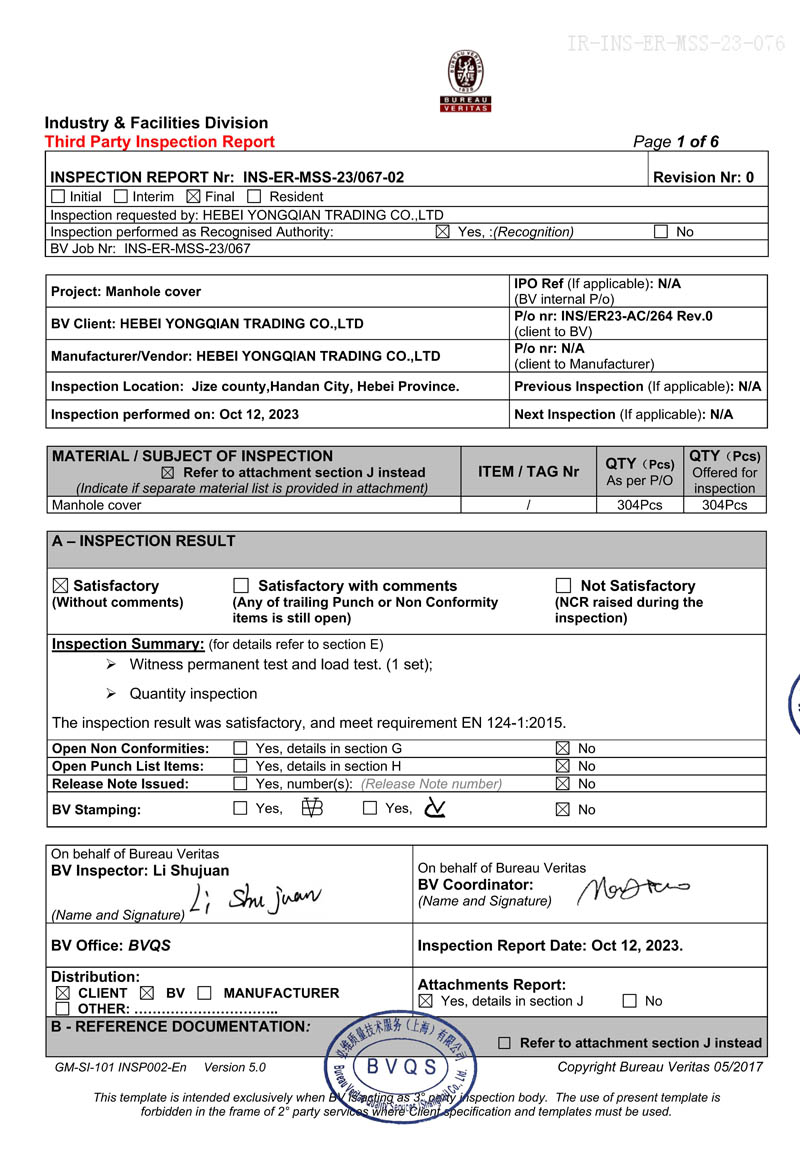Pneumatic Cylinder-Operated Gate Valve for Efficient Control Solutions
Gate Valve with Pneumatic Cylinder An Overview
Gate valves are widely employed in various industrial applications due to their ability to provide a straight-through flow path with minimal resistance. When combined with pneumatic cylinders, these valves can be operated with enhanced efficiency and precision, making them an essential component in automated systems for controlling fluid flow.
What is a Gate Valve?
A gate valve is a type of valve that opens and closes by lifting a gate out of the path of the fluid. This allows for smooth flow with minimal turbulence, making gate valves particularly suitable for on/off control. They are typically designed to remain either fully open or fully closed and are not ideal for throttling applications.
The primary components of a gate valve include the body, gate, seat, and actuator. While the body is the main structure housing the internal components, the gate is the movable element that can be raised or lowered to control the flow of the fluid. The seat is the surface against which the gate seals to prevent leakage when the valve is closed.
The Role of Pneumatic Cylinders
Pneumatic cylinders are devices that utilize compressed air to produce linear motion. They consist of a cylinder barrel, piston, and end caps, and they work on the principle of converting the energy stored in compressed air into mechanical work. When a pneumatically operated actuator is used with a gate valve, it facilitates quick and efficient opening and closing of the valve.
One of the key advantages of integrating a pneumatic cylinder with a gate valve is the speed of operation. Pneumatic actuators can operate rapidly, providing quicker response times compared to manually operated valves. This is particularly beneficial in applications requiring frequent adjustments or in scenarios where safety and emergency shut-offs are necessary.
Applications in Various Industries
gate valve with pneumatic cylinder

The combination of gate valves and pneumatic cylinders finds applications across several industries, including water treatment, oil and gas, power generation, and manufacturing. In water treatment facilities, for instance, these valves are used to manage the flow of raw water, treat effluent, and control the distribution of potable water.
In the oil and gas sector, gate valves with pneumatic actuators help control the flow of crude oil, natural gas, and other fluids in pipelines
. Their robust structure and reliable sealing capabilities are crucial for managing high-pressure environments typical in this industry.Power plants also benefit from the functionality of these valves, as they help regulate the flow of steam and water within the system. By integrating pneumatic cylinders, operators can achieve better control over these processes, ensuring more efficient energy production.
Advantages of the Combination
Using gate valves with pneumatic cylinders offers several advantages over traditional valve operations. One of the primary benefits is automation. Automating the operation of valves can significantly reduce the risk of human error, enhance operational efficiency, and allow for remote monitoring and control.
Moreover, this integration allows for better maintenance management. With automated systems, operators can receive real-time data on the valve's operational status, which can assist in predictive maintenance and minimize downtime.
Safety is another critical factor. Pneumatic actuators can provide a fail-safe mechanism. In the event of a power failure, these valves can be designed to default to a safe position, either fully open or fully closed, thus preventing potential hazards associated with uncontrolled fluid flow.
Conclusion
In conclusion, gate valves paired with pneumatic cylinders offer a robust solution for fluid control in various industrial applications. Their ability to provide quick, reliable, and automated control enhances operational efficiency, safety, and maintenance of fluid systems. As industries continue to move towards automation and advanced control systems, the demand for gate valves with pneumatic actuators is likely to grow, solidifying their position as essential components in modern industrial processes.
-
The Smarter Choice for Pedestrian AreasNewsJun.30,2025
-
The Gold Standard in Round Drain CoversNewsJun.30,2025
-
The Gold Standard in Manhole Cover SystemsNewsJun.30,2025
-
Superior Drainage Solutions with Premium Gully GratesNewsJun.30,2025
-
Superior Drainage Solutions for Global InfrastructureNewsJun.30,2025
-
Square Manhole Solutions for Modern InfrastructureNewsJun.30,2025
-
Premium Manhole Covers for Modern InfrastructureNewsJun.30,2025
